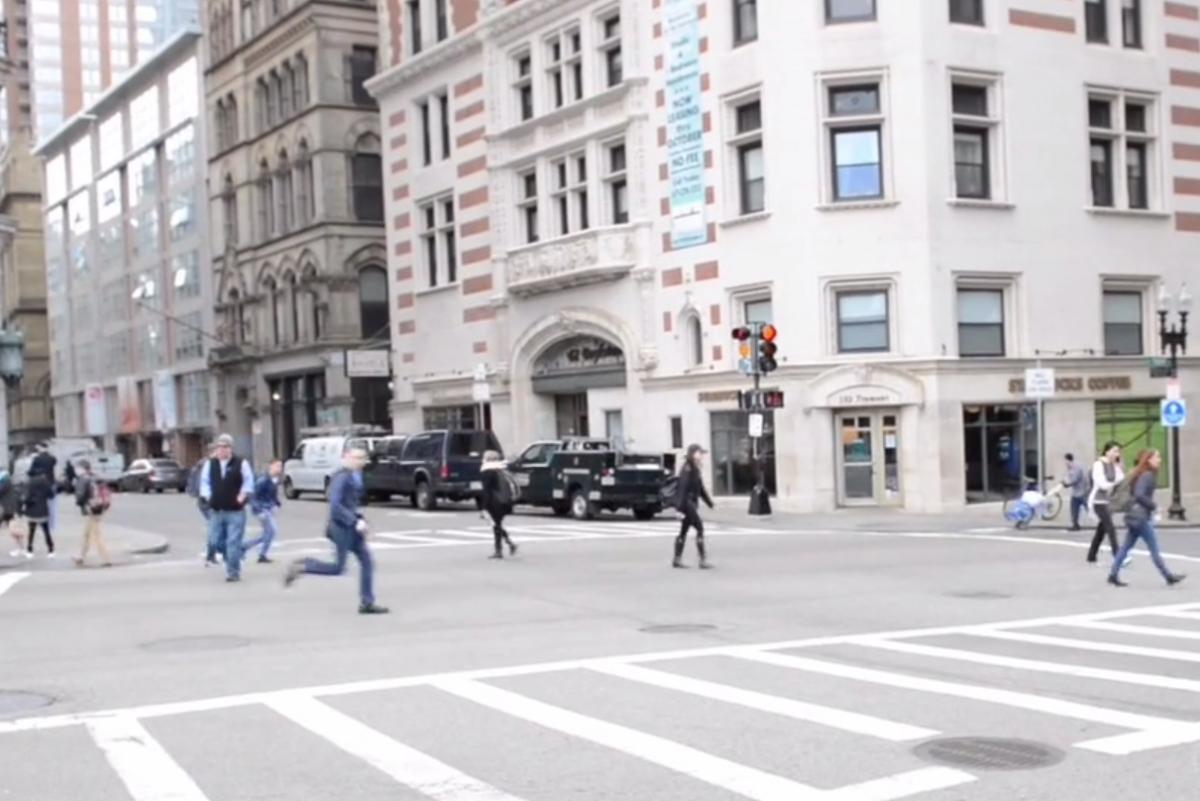City Adds Seconds to Walk Signal Following Student Civic Media Campaign

You can thank three Emerson College students (and the Boston Transportation Department) for giving you four extra seconds to hustle across the intersection of Boylston and Tremont streets.
Three students in Catherine D’Ignazio’s Fall 2016 Civic Art and Design Studio course — Kelsey Aijala ’18, Kate Bartel ’17, and Tori Knoerzer ’17 – took on pedestrian use for their portion of the class, which challenged students to think of creative ways of using civic media to improve the notorious crossing on Emerson’s doorstep.
The pedestrian group’s main focus was on giving people with mobility issues more time to get across the wide intersection, which often requires crossing at a diagonal. They did research and interviewed pedestrians, and presented their recommendation of five extra seconds to representatives from the City of Boston and the state Department of Transportation. Thanks to a savvy social media campaign, they got featured in the Boston Globe and local newscasts.
And the city listened.
“Receiving input from your students when we were reviewing the Tremont Street corridor was very helpful to us and we appreciate the Emerson community’s insight in this important project,” Boston Transportation Commissioner Gina Fiandaca wrote to D’Ignazio in a letter announcing the four-second change.
According to Fiandaca’s letter, the BTD reviews signal timings on key streets about once every five years. Traffic engineers collect extensive data and make computer models of existing conditions. The model is then adjusted to create optimal conditions for both vehicle and pedestrian traffic.
In the case of Boylston/Tremont, eleven seconds was deemed the way to go for safety and access.
Aijala said that while the city might have already had the intersection on their radar, she does think she and her classmates may have encouraged the city to shake a leg.
“We truly believed in [the project] and we were willing to go through the steps to make it happen,” said Aijala, who said D’Ignazio encouraged the students to keep working on their campaigns even after the class was over, “but we never expected it to happen so quickly.”
The team circulated an online petition as part of the project, and got a couple of hundred people to sign in support of five more seconds. But the real gas in the engine, Aijala thinks, was all the local media coverage that came from their #Take5Emerson hashtag campaign. The proposal got picked up by the Globe and local TV stations, and President Lee Pelton agreed to fund a traffic study at the intersection.
“I am so pleased with the work of all of the students in the Civic Art & Design Studio class,” D’Ignazio, assistant professor of Journalism, said in an email. “I am frankly thrilled that the students in the pedestrian group were able to garner media attention with their civic media campaign and that the city responded so quickly and positively. Real change is hard and these students accomplished it!”
Aijala said she had expected to keep pushing for the signal change, but now that it’s happened, she’s not planning to kick back.
“I think it was a really great experience, it was very rewarding,” she said. “I’m very interested in doing civic media projects in the future.”
Categories